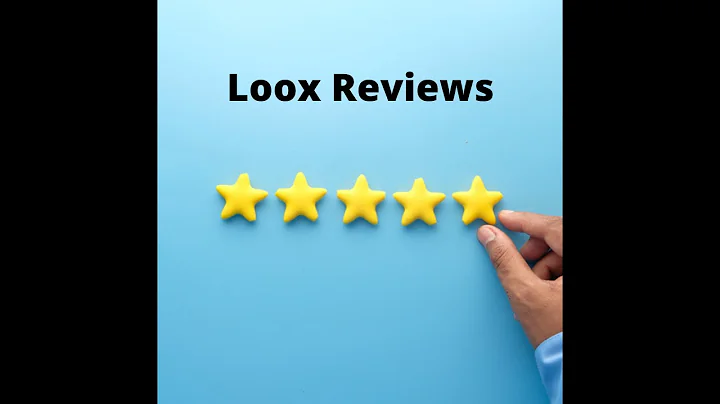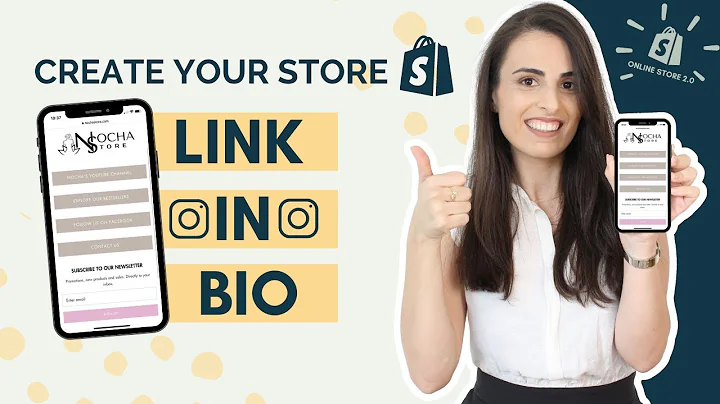Increase Sales with Omnisend's SMS Marketing
Table of Contents
- Introduction
- Statistics on SMS Marketing Performance
- Ways to Collect SMS Subscribers
- Using Omnisend Signup Forms
- Shopify Checkout
- Bringing Contacts to Omnisend
- Subscriber Preference Center
- Importing Contacts
- Setting up the SMS Channel on Omnisend
- Creating an SMS Campaign
- Best Practices for SMS Marketing
- Upselling in Shipping Confirmation
- Birthday Automation
- Reactivating Email Contacts
- Engaging Non-Openers
- Loyalty Points Reward
- Conclusion
Pros and Cons of SMS Marketing
Pros:
- High open rates, with an average of 98%
- Immediate and direct communication with customers
- Increased engagement and conversion rates
- Cost-effective compared to other marketing channels
- Opportunity for personalized and targeted messaging
- Ability to drive traffic to your website or store
Cons:
- Limited message length (usually 160 characters per message)
- Potential for increased opt-outs if overused or not targeted properly
- Regulations around spam and consent in some countries
- Not all countries display the sender's name, limiting branding opportunities
SMS Marketing: Boost Engagement and Drive Sales
In today's digital age, businesses are constantly looking for effective ways to engage with their customers and drive sales. SMS marketing has emerged as a powerful tool to achieve these goals. With impressive open rates and the ability to reach customers directly on their mobile devices, SMS marketing is gaining popularity across industries.
Statistics on SMS Marketing Performance
The statistics in the industry reveal that SMS open rates average 98%, which is significantly higher than the average email open rate of around 20%. Research shows that 90% of customers read SMS messages within three minutes of receiving them, and 29% engage with the links provided in those messages. Furthermore, 50% of those who engage with the links end up making a purchase, resulting in a conversion rate of approximately 13%.
Omnisend, a leading SMS marketing platform, has observed impressive results for businesses. On Black Friday alone, businesses using both SMS and email channels earned an average of 21% more orders compared to those using the email channel only. These statistics highlight the potential of SMS marketing to drive significant growth for businesses.
Ways to Collect SMS Subscribers
To harness the power of SMS marketing, businesses need to build a subscriber list. There are several effective ways to collect phone number opt-ins or bring SMS subscribers to Omnisend:
-
Using Omnisend Signup Forms: Omnisend offers various sign-up forms, such as pop-ups or sign-up boxes, where businesses can collect phone number opt-ins. By enabling the phone number opt-in feature in these forms, businesses can effortlessly gather phone numbers from interested customers.
Pros: Easy to implement, customizable forms, and an effective way to collect opt-ins directly.
Cons: Some customers may be hesitant to provide their phone numbers, so it is advisable to keep the field optional.
-
Shopify Checkout: For Shopify users, enabling opt-in collection during the checkout process can be an effective way to collect phone number opt-ins. By adjusting the settings in the Shopify store admin panel and enabling opt-in collection in the Omnisend app, businesses can seamlessly gather phone numbers from customers during the checkout process.
Pros: Integration with Shopify makes it convenient to collect phone numbers at the point of purchase.
Cons: Limited to Shopify users only.
-
Bringing Contacts to Omnisend: If businesses already have subscribers collected through third-party apps like Privy or OptinMonster, they can sync those contacts to Omnisend. Omnisend offers direct integrations with various third-party apps, ensuring a smooth transfer of contacts.
Pros: Allows businesses to consolidate their subscriber list and leverage Omnisend's SMS marketing features.
Cons: Requires integration with supported third-party apps.
-
Subscriber Preference Center: Implementing a subscriber preference center provides an opportunity to collect additional details from existing subscribers. Businesses can ask for information like phone numbers, product preferences, or preferred communication frequency. By adding the phone number field to the preference center, businesses can gather phone number opt-ins along with other valuable information.
Pros: Enables businesses to personalize their marketing efforts and gain insights into customer preferences.
Cons: Requires subscribers to actively provide information, which may result in lower opt-in rates.
-
Importing Contacts: If businesses have already collected phone number opt-ins from a different platform or using third-party apps, they can import those contacts to Omnisend. This can be achieved by using the "import from a file" option and mapping the opt-in date during the import process. It is crucial to ensure that the imported contacts have given consent to receive communication and promotions.
Pros: Allows businesses to leverage their existing subscriber base without starting from scratch.
Cons: Requires consent verification and careful management of imported contacts.
By employing these methods, businesses can steadily grow their SMS subscriber list and unlock the full potential of SMS marketing with Omnisend.
Setting up the SMS Channel on Omnisend
Once businesses have collected a substantial number of SMS subscribers, it is essential to set up the SMS channel on Omnisend to effectively manage and send SMS campaigns. By following a few simple steps, businesses can activate the SMS channel on Omnisend and start utilizing its powerful features.
-
Subscription: To subscribe to the SMS channel on Omnisend, users need to access the store settings in their Omnisend account. By clicking on their profile menu and selecting "Store Settings," they can find the option to subscribe to SMS credits. SMS credit subscriptions are available for as low as $20 and are inclusive of the chosen billing cycle.
Pros: Affordable subscription plans that align with users' billing cycles.
Cons: SMS pricing varies based on the recipient's country, where different countries may have different rates.
-
Pricing: The SMS pricing on Omnisend depends on the recipient's country. By visiting the pricing page on the Omnisend website, users can access a calculator that provides detailed pricing information for different countries. Users can subscribe to SMS credits based on their specific needs and the number of SMS subscribers they currently have.
Pros: Transparent pricing structure and flexibility to choose the appropriate subscription tier.
Cons: Pricing may vary based on the recipient's country, requiring careful consideration of the target audience.
-
SMS Credit Balance: Once subscribed, users can monitor their SMS credit balance in the store settings. Omnisend provides details on the remaining SMS credits, including refilled credits, roll-over credits, subscribed credits, and credits included in the plan. Users can also change or cancel their SMS subscription as needed.
Pros: Accessible overview of SMS credit balance and options for subscription management.
Cons: Users need to actively monitor and manage their SMS credit balance to avoid depletion.
With the SMS channel set up and a sufficient SMS credit balance, businesses are ready to create and send impactful SMS campaigns using Omnisend.
Creating an SMS Campaign
Crafting a compelling SMS campaign is crucial for engaging customers and driving sales. Omnisend provides a user-friendly interface to create and customize SMS campaigns effectively. Let's explore the steps involved in creating an impactful SMS campaign:
-
Content Step: In this step, users need to provide details like the campaign name and sender's name. It is essential to add the brand name to the message since the sender's name may not be displayed in some countries. The SMS text should be concise, incorporating any promotions and a link to the store or a specific product.
Pros: Straightforward process with options to personalize and include promotional links.
Cons: Message length constraints require careful selection of content.
-
Subscriber Selection: Users can choose the subscribers to whom they want to send the SMS campaign. It is recommended to select engaged subscribers and targeted groups to ensure the message reaches the most interested audience.
Pros: Targeted subscriber selection for improved campaign relevance.
Cons: Results may vary based on the size and engagement level of the selected subscriber groups.
-
Price Estimation: Omnisend provides a price estimation feature that displays the cost of the campaign based on the chosen recipients and the recipient's country. Users can see the number of messages, the price per SMS, and the total pricing. Additionally, there is a daily limit of 250 free messages for recipients in the US.
Pros: Transparent pricing overview, enabling users to manage campaign costs effectively.
Cons: Additional costs may be incurred if the daily limit is exceeded or if users require a higher message limit.
Once the campaign details are finalized, users can choose to send the SMS campaign immediately or schedule it for a later time. By leveraging the power of SMS marketing, businesses can significantly enhance their customer engagement and drive sales.
Best Practices for SMS Marketing
To maximize the impact of SMS marketing campaigns, it is important to follow best practices that have proven successful for businesses. Here are five best practices to consider:
-
Upselling in Shipping Confirmation: One effective strategy is to include upselling opportunities in shipping confirmation messages. Since customers eagerly await shipping updates, providing additional product recommendations or exclusive discounts in these messages can significantly boost sales.
Pros: Capitalizes on high customer engagement during the shipping confirmation stage.
Cons: Requires careful selection of upsell offers to avoid overwhelming customers.
-
Birthday Automation: Celebrating customers' birthdays through automated SMS campaigns can be a delightful surprise. By offering personalized birthday discounts or rewards, businesses can strengthen customer loyalty and encourage repeat purchases.
Pros: Builds a personal connection with customers and enhances brand loyalty.
Cons: Requires collecting customers' birthday information and managing automated birthday campaigns.
-
Reactivating Email Contacts: SMS marketing can be an effective tool to re-engage customers who have stopped opening email promotions. By sending an SMS message with a preview of a surprise offer and following up with email reminders, businesses can reignite customer interest and boost conversions.
Pros: Provides an alternative channel to reach unresponsive email contacts.
Cons: Requires segmenting and monitoring unresponsive email contacts separately.
-
Engaging Non-Openers: To ensure that promotional messages reach the intended audience, businesses can set up campaigns specifically targeting customers who have not opened previous email campaigns. By sending SMS reminders with appealing offers, businesses can increase the chances of conversion.
Pros: Increases the reach and engagement of promotional messages.
Cons: Requires segmenting non-openers and careful monitoring of campaign performance.
-
Loyalty Points Reward: For advanced users leveraging loyalty point systems, SMS campaigns can be a great way to engage customers. By triggering SMS messages when customers reach a certain milestone in their loyalty points, businesses can incentivize purchases and reward customer loyalty.
Pros: Encourages customer engagement and repeat purchases through tailored loyalty programs.
Cons: Requires integration with loyalty point systems and careful campaign coordination.
By implementing these best practices, businesses can leverage the power of SMS marketing to boost customer engagement, drive sales, and enhance brand loyalty.
Conclusion
SMS marketing has emerged as a highly effective channel for engaging customers and driving sales. With impressive open rates and immediate communication, businesses can leverage SMS alongside email marketing to achieve remarkable results. By implementing various strategies to collect SMS subscribers, setting up the SMS channel on Omnisend, and following best practices for SMS marketing campaigns, businesses can unlock the full potential of SMS marketing.
As you embark on your SMS marketing journey, remember to personalize your messages, provide value to your customers, and monitor campaign performance to continuously improve your results. With the right approach, SMS marketing can significantly impact your business's growth and success.













